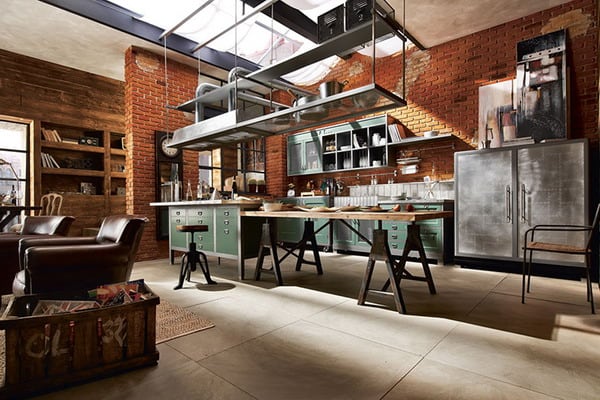The architectural trends for 2020 and 2021 have one thing in common: the commitment to sustainable development and sustainable architecture. Society in general is evolving towards environmental commitment and architectural trends, as a social manifestation, too.
The use of recyclable materials, buildings that are self-sufficient and installations of all kinds that respect the planet are becoming more frequent. But there are more trends in architecture that we tell you below.
1. Industrial style in the housing architecture
It is defined by asymmetrical forms in construction, both in residential buildings and in other urban infrastructures. It is characterized by the combination of iron, wood, aluminum and even recycled plastic, which means a reduction in construction costs. Simple lines and absence of surface elements are also characteristic of the industrial style.
2. Home automation and smart homes
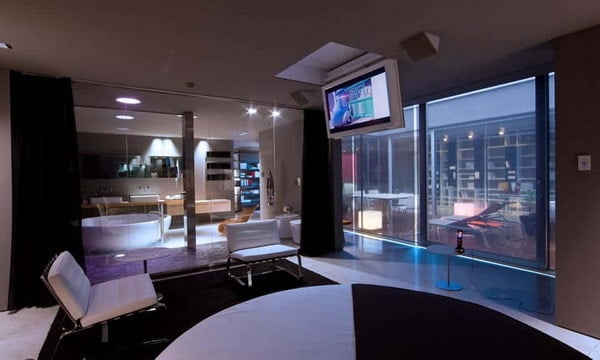
A smart building offers its users greater comfort and reduces consumption bills. Domotic architecture is a reflection of social awareness for the care of the environment and the need to consume the right.
3. Open and multipurpose spaces

Use building materials that serve as a link between the rooms and decorate the entire room in a consistent way, to gain space and light.
The integration of the kitchen and the living room is the most common in the floors with a few meters. But you can also choose to join the living room with the terrace or the living room with the bedroom. In the market there are folding and retractable furniture that will help you in these cases so that you can pass from one to another naturally.
Heritage is a stone from the limestone family of our Azulev brand. This tile is ideal to unify interior or exterior spaces, as we see in the image above.
The new uses of traditional spaces were the subject of debate in the latest edition of SIMO, where Martha Torne and the architect Frida Escobedo discussed this topic. An irrefutable proof of how the concept of a room and architectural interest is changing to redefine spaces.
4. The kitchen is the new protagonist…
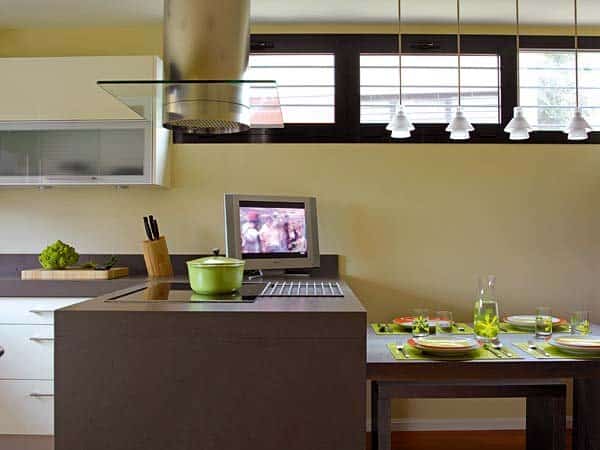
On this occasion, we have also used the Heritage series to create this kitchen environment.
That is why the trends in architecture for 2020 give prominence to the kitchen, increasing its dimensions and connecting it with the dining room and the living room. If you have that possibility, place a central island that serves as a water zone and a breakfast bar and that visually separates the lounge area.
5…. and the bathroom is a space for relaxation
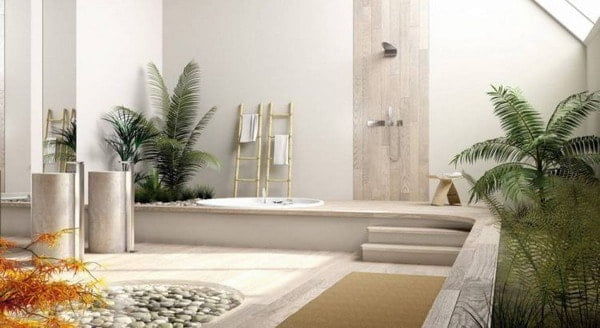
This magnificent bathroom is much more than a bathroom is a real spa that we can have in our home, to enjoy a time of relaxation and relaxation thanks to the sauna, whirlpool and hammocks where we can relax lying. This environment has been designed with our Calacatta and EternalOak series.
The new trends in bathrooms opt for coatings in very light or white colors, with tiles that facilitate cleaning and transmit calm and serenity. The shower becomes the main protagonist of the bathroom, either a hydro massage cabin or a shower with screen. It is important that you have the necessary dimensions so that its use is comfortable for all users.
The simple furniture with storage capacity, to have it all collected, and an indoor plant will create the necessary atmosphere to enjoy the daily care.
6. Protagonism of floors and walls
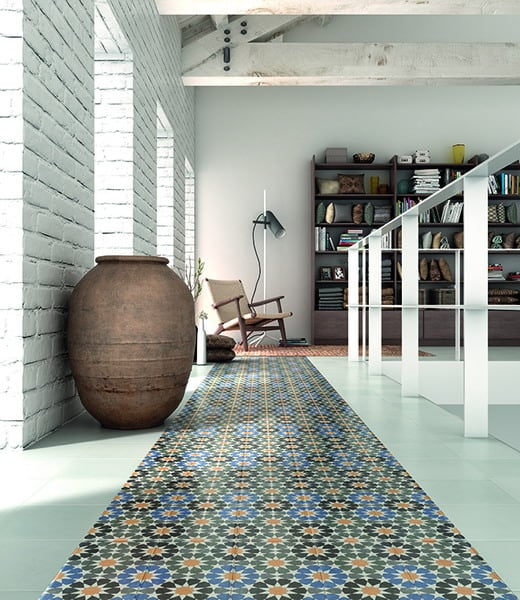
In the image above, we see an environment with floors and walls with our marble tiles of the Calacatta de Azulev series.
7. Risky combinations
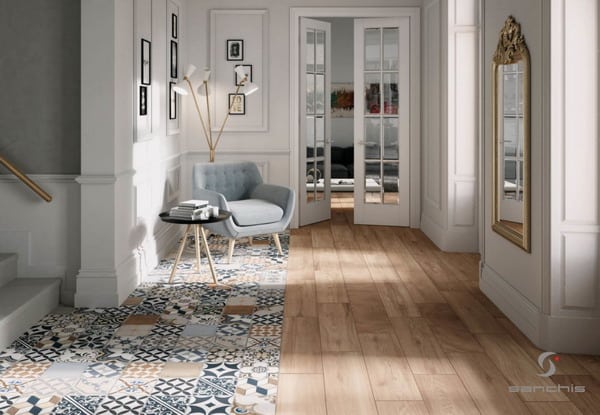
In the image above, we can see the spectacular result that the combination of the porcelain parquet of the Traditional Woods series by Combiwood and the hydraulic tiles of the Oldker series by Sanchis provide.
The yellow in its different tonalities; from the ancient rose to the red watermelon; tiles with textures that mimic corduroy or tweed.In short, an explosion of shapes and colors that will affect the construction and decoration of homes and work spaces to create spaces full of life.
8. White, always white
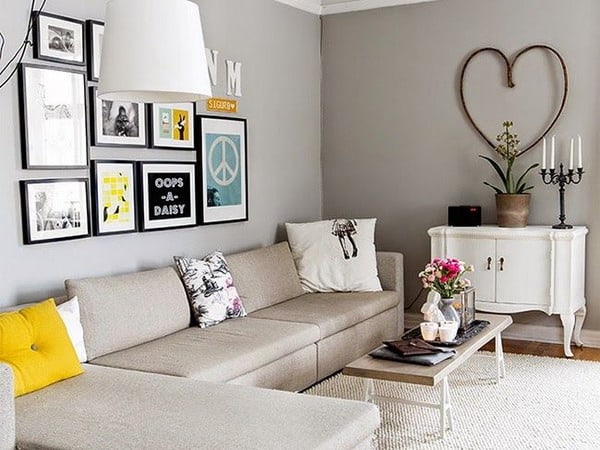
In addition, it reflects all the light received, so it is recommended in the case of dark or interior rooms. Used in its proper measure, for example, in bathroom tiles, white will provide an excellent aesthetic result.
9. Reform, rehabilitate, remodel
The principle of achieving the best results by minimizing the works is a trend during 2020. Rehabilitating old buildings, and historical in many cases, to give them a new usefulness is a process that we have been observing in our cities for several years.
Also the reform of the houses to adapt them to the new social demands and to endow them with greater comforts. These actions have the advantage of a lower economic cost than the construction from scratch of the house or building.
All the series of our line Slim Rect are especially indicated for the reforms and the rehabilitation of buildings, since they allow the over-tiling thanks to its thin thickness of 6mm. Likewise, XLAM brand of Azulev Group also offers extra-thin pavements, 6mm thick, which are ideal for renovations and renovations because they also allow over-tiling.
10. The new minimalism

11. The contract concept
This innovative concept creates innovative working environments through open, transparent and transparent spaces. According to the new methodology at work, which advocates collaboration and teamwork, offices are conceived as constantly changing spaces that can be adapted at any time to the needs of users.
The contract concept is transferred to the houses to create multifunctional spaces without partition walls between some rooms and with rooms limited by glass walls.
12. Enjoy the outdoors all year
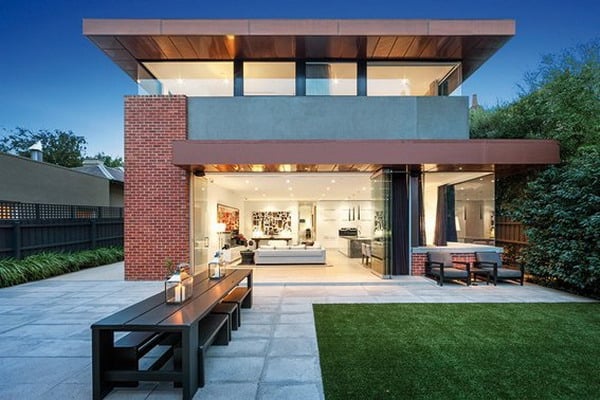
The Brooklyn series by Azulev, among others of our brand, with anti-slip finish, ideal for all types of exteriors.
Brooklyn is a contemporary material that fuses cement, stone and cotto. Its minimalist essence makes it an ideal tile for modern or industrial style rooms, which can be placed both indoors and outdoors. This series can be found in the following formats: 100×100, 50×100, 75×150, 75×75, 59×59, 29×59 and 75×75 with 20mm thickness.
13. Less noise, more light
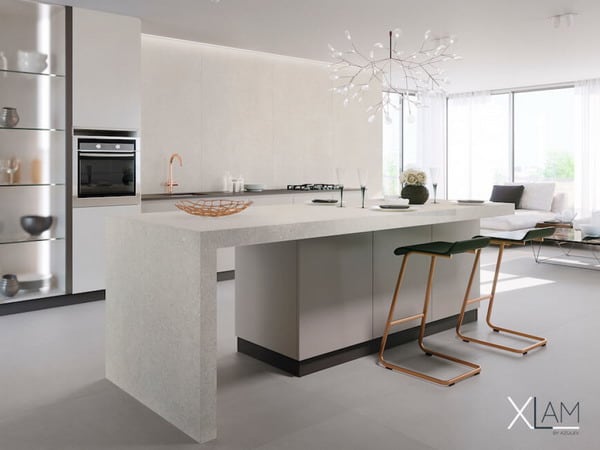
At the same time,architectural technology is developed so that buildings take advantage of the natural light they receive from the sun. And, at the same time, there are trends that integrate artificial lighting in the most natural way possible, either with foci stolen between the furniture or in the form of indirect warm light.
14. Tests with novel constructive methods
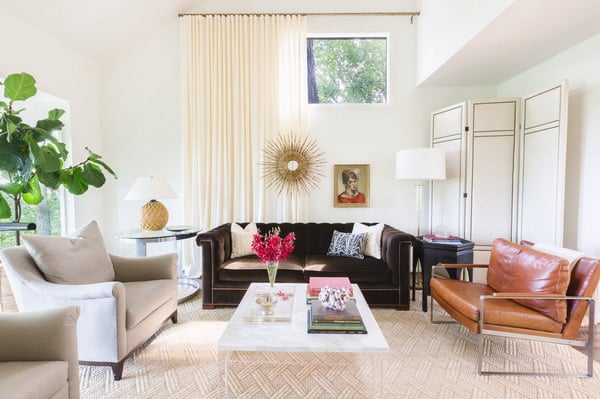
Environment created with a floor designed with the Genuine series by Azulev, which is a wooden porcelain tile, and a special lining for the fireplace, for which the Expression series of our large format XLAM brand has been used. The Expression collection is a very thin type of tin and iron plate.
15. Passive houses
What emerged as a trend in architecture, the passive house, has become a philosophy of life and a way of understanding how the relationship with the environment should develop. The architectural design in these homes has the primary objective of using available resources, maximizing energy savings. Thus, passive houses not only save their owners, they also contribute to improving the health and quality of life of those who inhabit them.
The concern for the environment and commitment to its care are social aspects that are reflected in the architectural trends of 2020. The use of less polluting materials and sustainable buildings is increasingly an objective of individuals and public administrations in construction of buildings.
These fifteen architectural trends will influence the style, design and decoration of the houses and buildings of the coming years.

